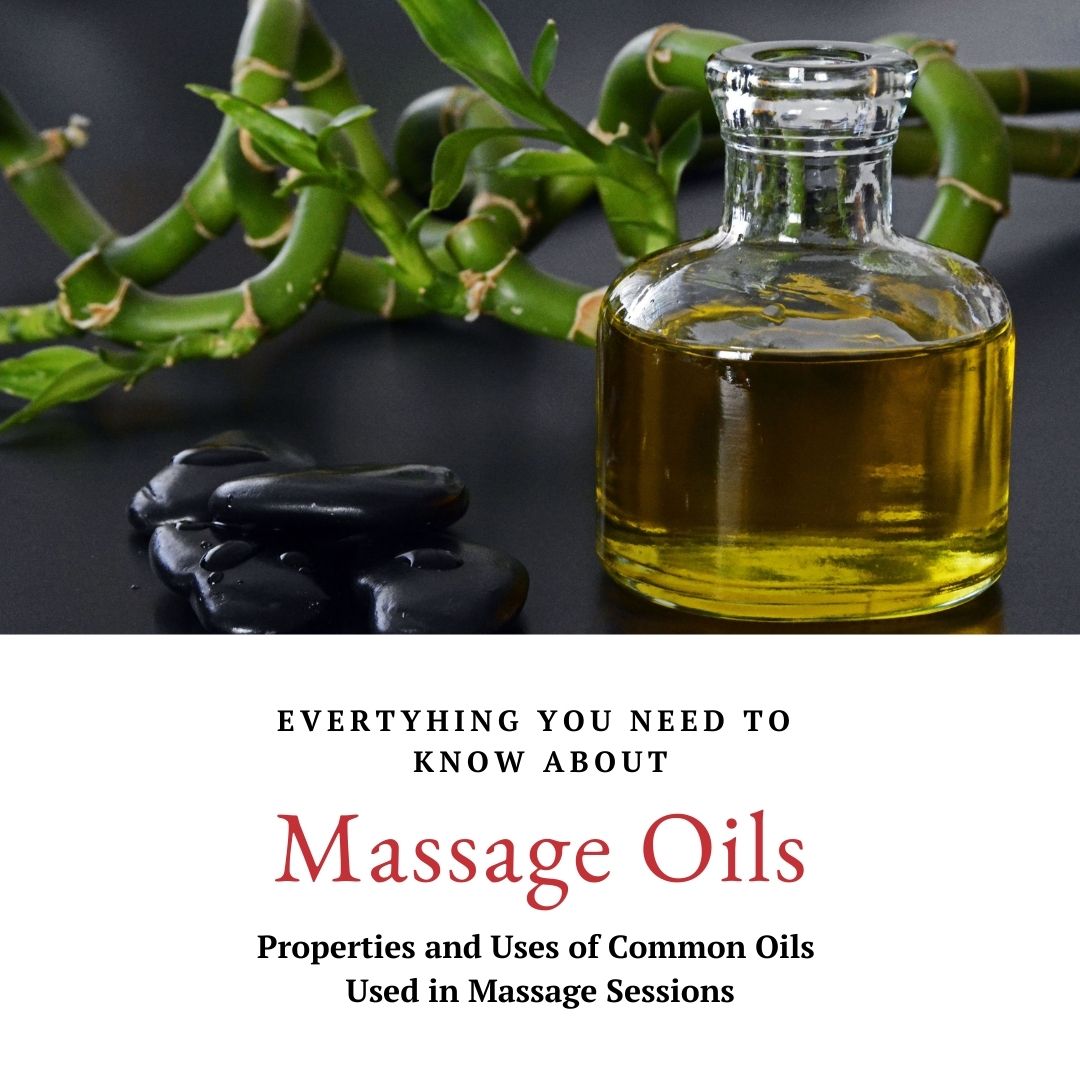ELAP recommendations: Massage Equipment and Enviroment: Conditions: Having completed 2.5 hours of instruction on equipment and session environments, the learner is expected to:
• Demonstrate knowledge of the key terms and concepts related to massage
equipment and session environments, including types of equipment and features,
lubricants, supplies, and factors for creating a comfortable, inviting, and safe
session space, on a graded assignment.
• Correctly set up, organize, adjust for comfort and safety, sanitize, and properly use
massage equipment, lubricants, and supplies related to the practice of massage
therapy on a practical evaluation.
Massage Oils are usually introduced in massage school. When in practice, most massage therapists move to using lotions as they are absorbed better and don’t leave the client feeling greasy.
The primary use of massage oils is to reduce the friction between the massage therapists hands and the clients skin. Oils are derived from nuts, seeds or vegetables and may have additives like Vitamin E to reduce rancidity. Oils stain sheets and massage table linens as well as floors around the massage table when drops of oil inadvertantly land on the floor. Oils in sheets create a high risk of fires in the dryer.
Oils are emollient, which means that they soothe, soften, and make supple. This helps with hard, dry, rough, non-resilient skin. Hand in hand with softening is the property of moisturizing. Moisturizing oils are said to be humectant which means to retain and preserve moisture. Demulcent oils help to soothe sensitive skin that has been damaged, and vulnerary oils act to heal injuries and wounds. Astringents aid in tightening and toning the skin. Tonic oils invigorate and stimulate. ~ Feeding the Skin. By Kondañña (Barry Kapke) Originally published in Massage & Bodywork magazine, December/January 2006. Massagetherapy.com
| Type of Oil | Properties of Massage Oils | Uses of Massage Oils |
| Sweet Almond Oil | Color: very pale yellow Ingredients: glucosides, minerals, vitamins, proteins penetrates skin and nourishes anti-inflammatory light | One of the most popular massage oils: good for most skin types especially for dry, itching skin. Can be used 100%. Often used as a carrier oil for aromatherapy |
| Apricot Kernel Oil | color: pale yellow Ingredients: vitamins, minerals relieves stress balancing | good for all skin types especially for skin that is prematurely aged, dry, sensitive or inflamed can be used 100% |
| Avocado Oil | heavy green color Ingredients: Vit A, E High in chlorphyl and carotenoid pigments | good for most skin types commonly used in fascials because of their
|
| Borage Oil | color: pale yellow Ingredients: gamma linolenic acid, vitamins, minerals regenerative penetrating stimulating | eczema, psoriasis |
| Castor Oil | color: light yellow very thick, sticky cleanses lymphatic system | use on dry, cracked feet use on scar tissue use in poultice (wool flannel cloth) |
| Coconut Oil (fractunated) | color: light yellow solid at room temperature; needs to be warmed. thick, heavy grounding | good for all skin types, especially dry, cracked skin |
| Emu Oil | color: light yellow anti-inflammatory assists in collagen formation | good for all skin types: may block pores is some; watch for reactions used for arthritis, bursitis, sore muscles, bruising, eczema, keloids |
| Grapeseed Oil | color: none or very pale green Ingredients: vitamins, minerals, proteins highest in linoleic acid non-allergenic | good for all skin types can be used 100% |
| Jojoba Oil | color: dark yellow Ingredients: protein, minerals From a bean of a desert shrub helps prevent oxidization of essential oils waxy-solid at cold temperatures antibacterial assists in breaking down sebum in plugged pores highly penetrating balances the brain and pituitary | Used to treat skin disorders, eczema, acne keeps longer than most oils good carrier oil Use full strength or in dilution with other oils |
| Kukui Nut Oil | color: none odorless Ingredients: linoleic and linolenic acid slightly warming effect light, dries fast antibacterial, antioxidant, anti-inflammatory helps keep oil from going rancid | good for all skin types usually an additive People may have nut allergies |
| Olive Oil | color: green Ingredients: proteins, minerals, vitamins E, calcium ,copper, iron, magnesium, phosphorus, zinc, carotene warming relieves stiffness heavy | good for all skin types can be used 100%, but rather thick: diluted is best Extra virgin and cold pressed recommended. |
| Peanut Oil | color: pale yellow Ingredients: protein, vitamin B and niacin, minerals anti-inflammatory thick smells like peanuts | check to see if client is allergic to peanuts good for all skin types especially dry skin use for bursitis, arthritis make sure it’s organic |
| Sesame Oil | Color: dark yellow Ingredients: vitamin E, lecithin, amino acids antiseptic, anti-fungal nourishing prevents premature aging of skin purifier thought to be the most stable of oils in terms of spoilage. | May want to use odorless good for all skin types, except for red, rashy irritated skin can be used on dry cracked skin rheumatism, arthritis destroys ringworm, scabies and most fungal skin diseases. can be used 100% but diluted to 10% is best (can be too warming) |
| Safflower Oil | color: pale yellow Ingredients: protein, minerals, vitamin E, linoleic acid blood cleanser quickly turns rancid | good for all skin types can be used 100% |
| Wheat Germ Oil | color:pale yellow Ingredients: Vitamin E, proteins, minerals, other vitamins help prevents oxidization of essential oils | Check for wheat allergies Use in 10% dilution with base oil good for eczema, psoriasis, aging skin |
